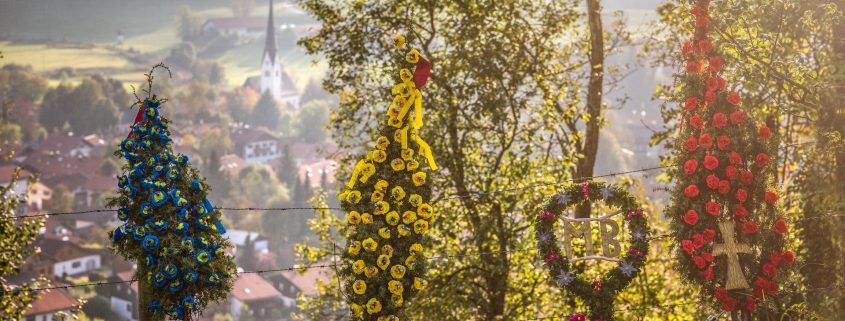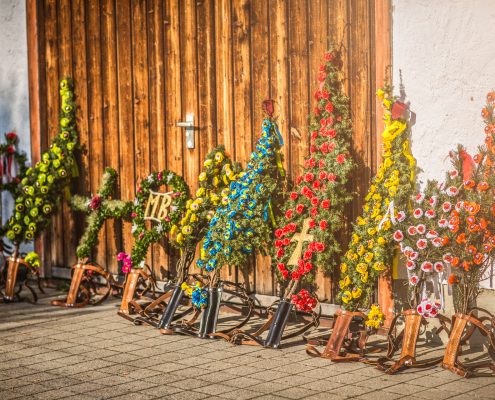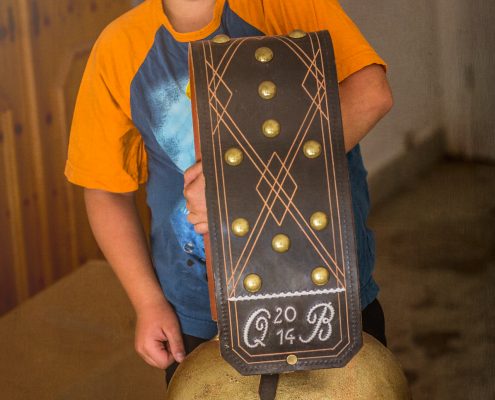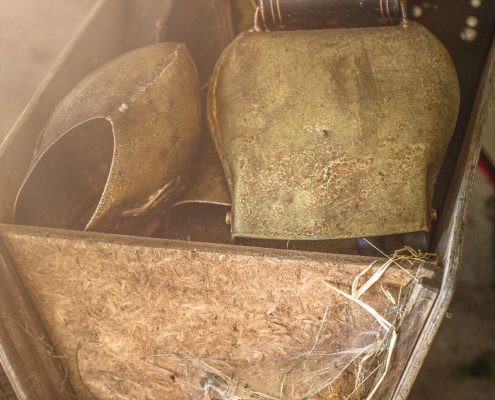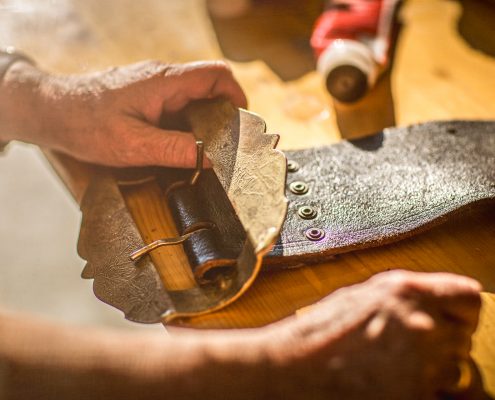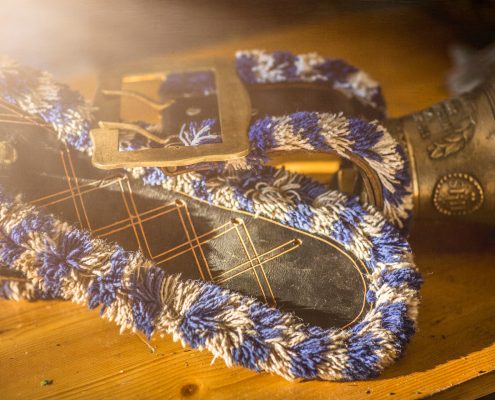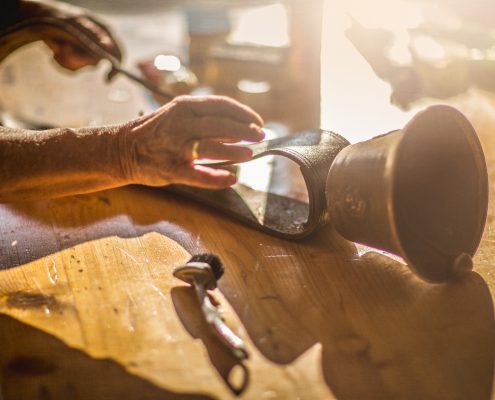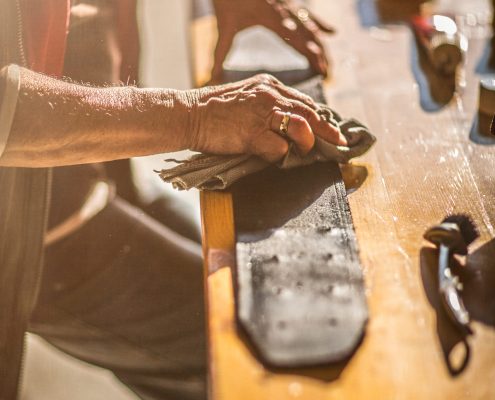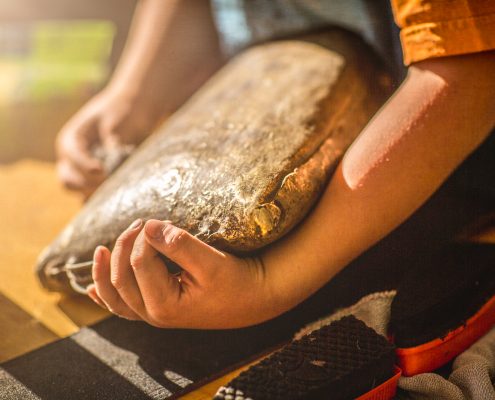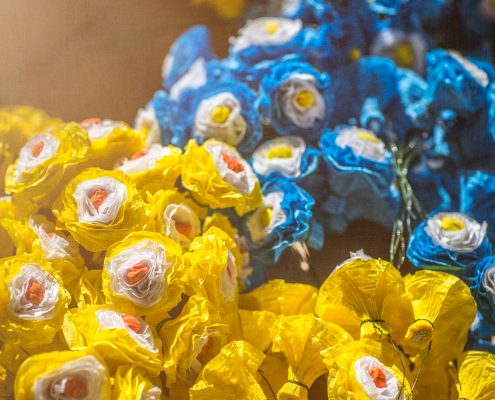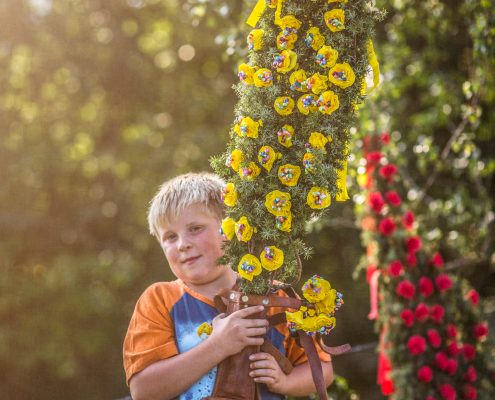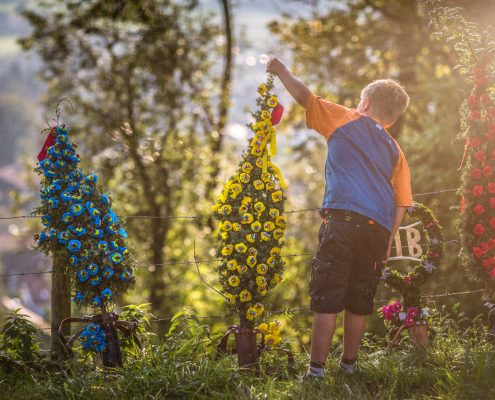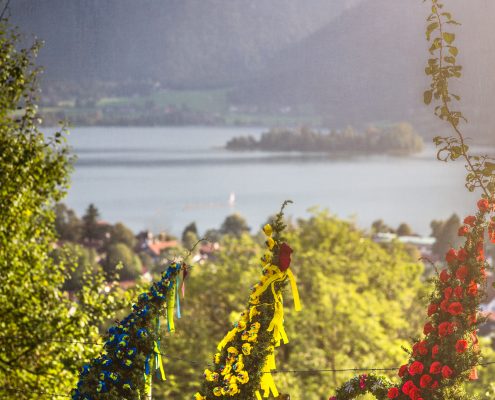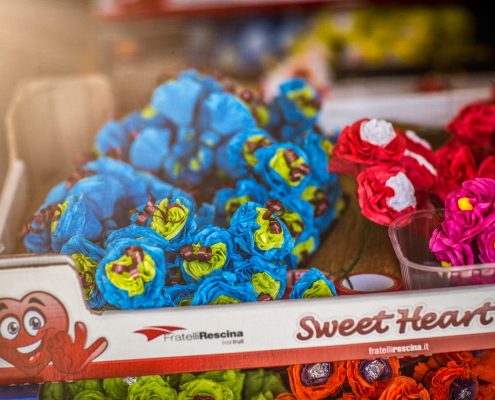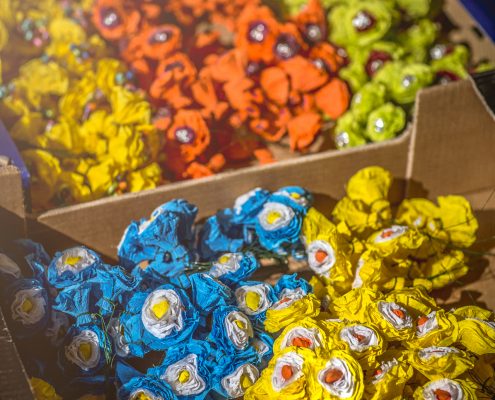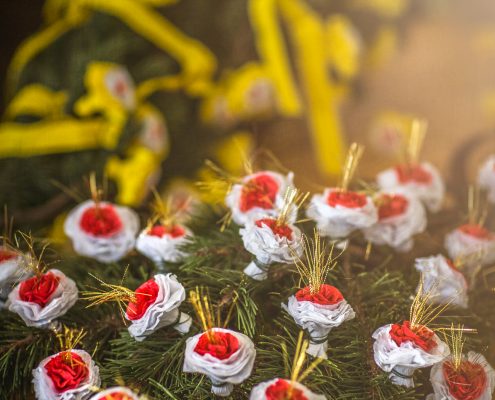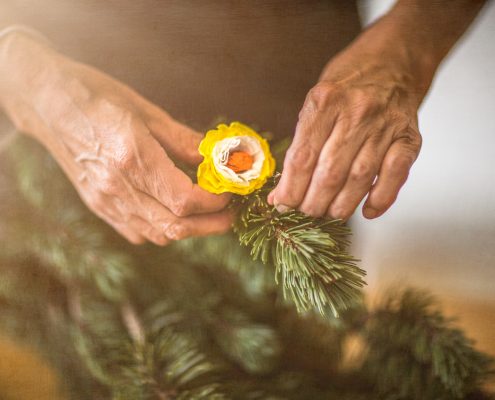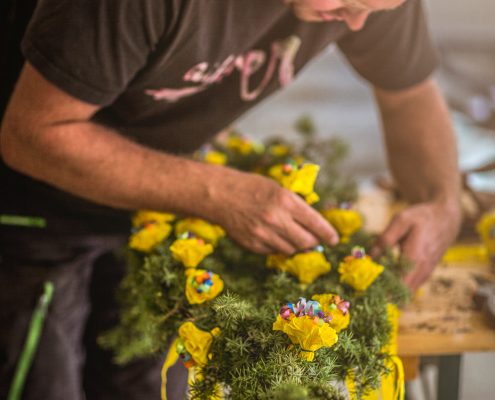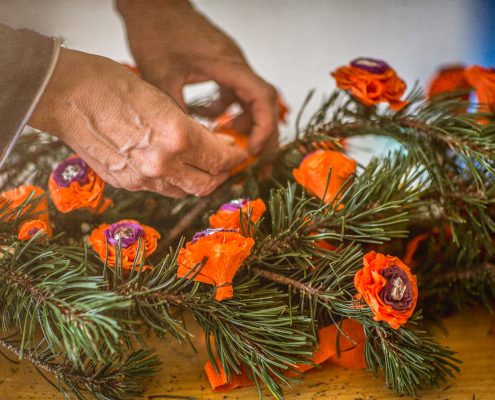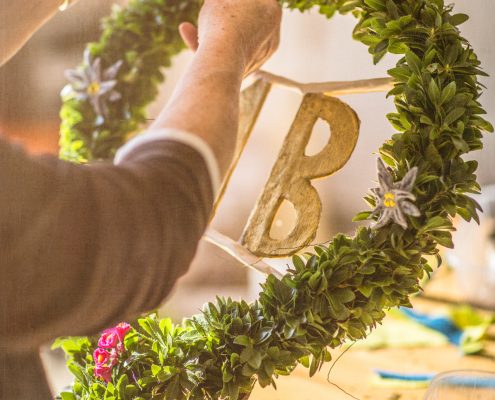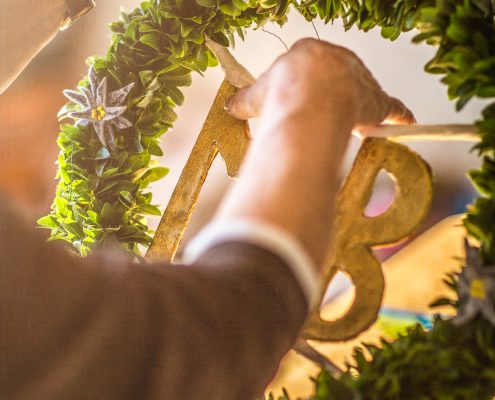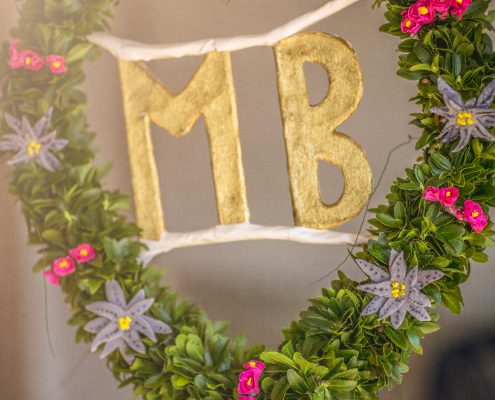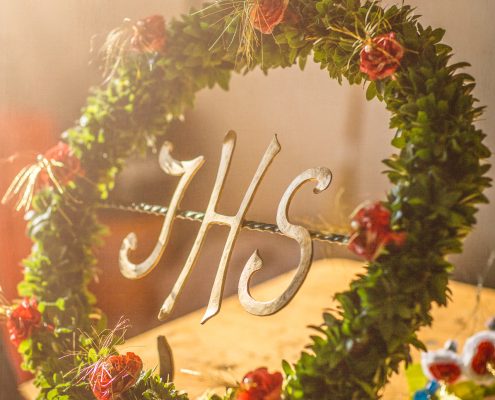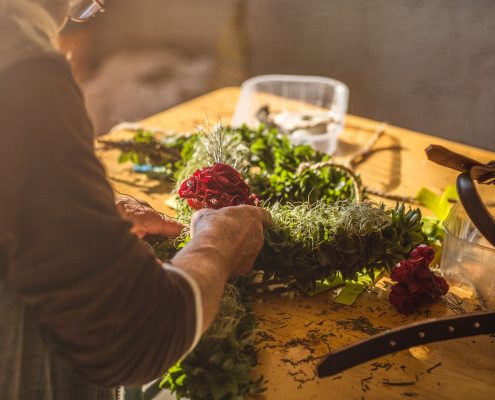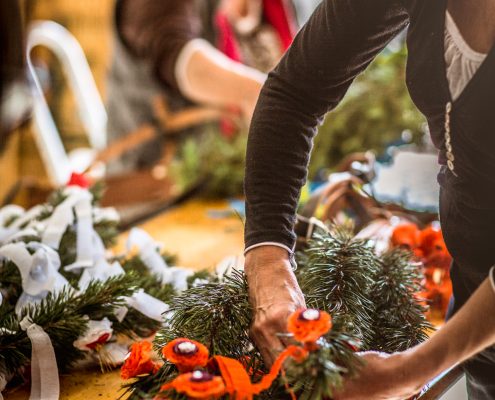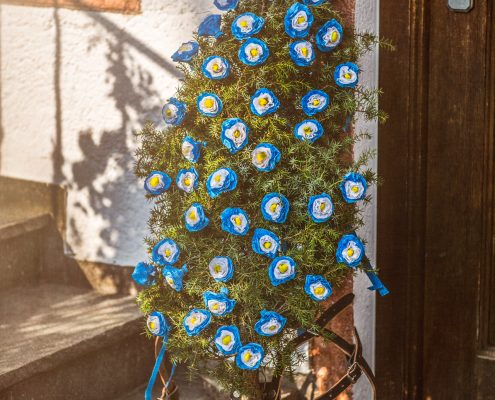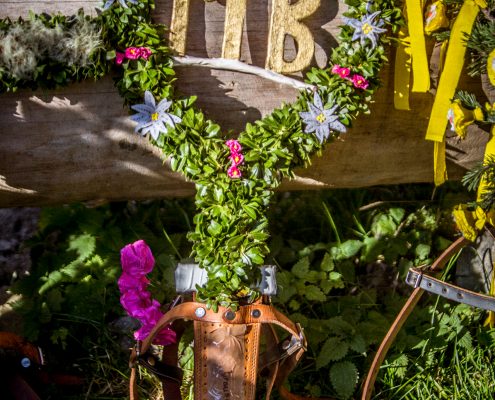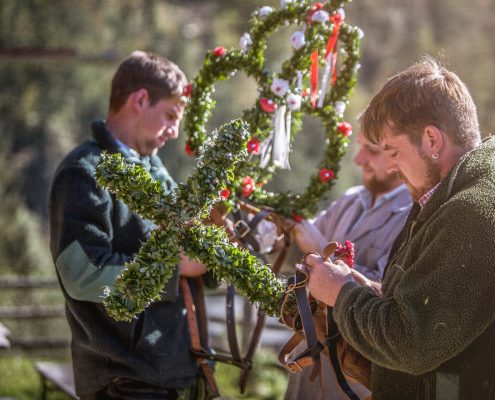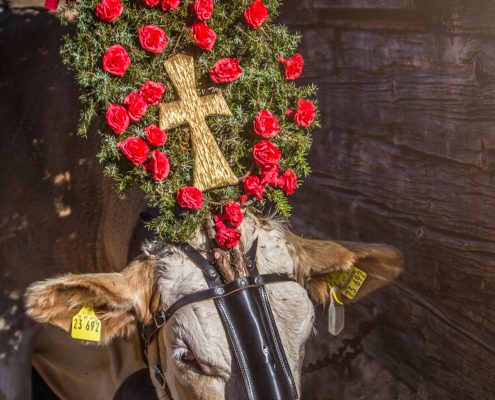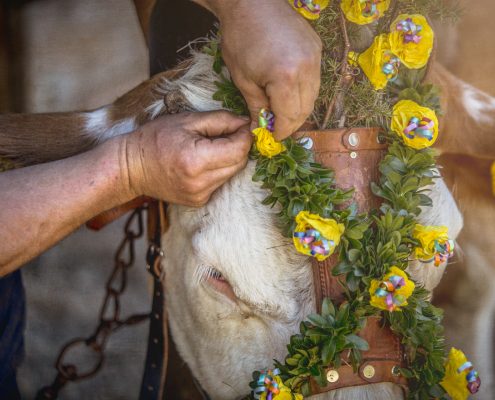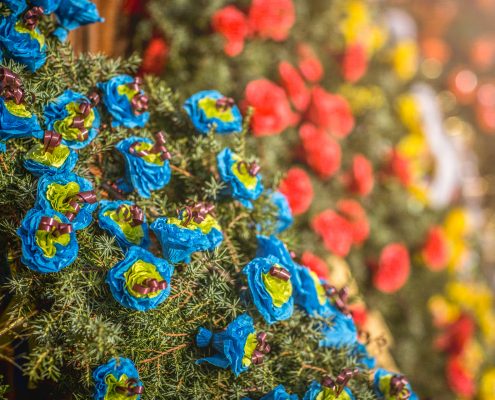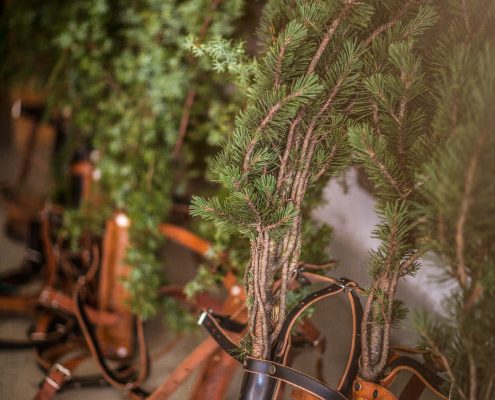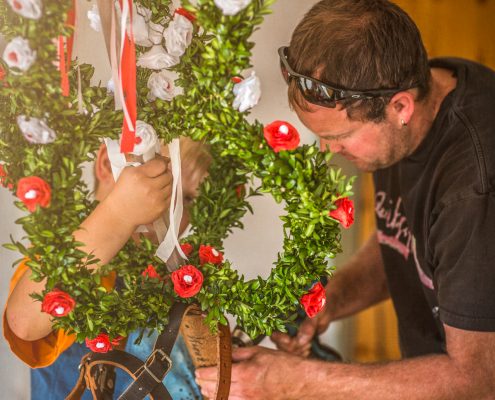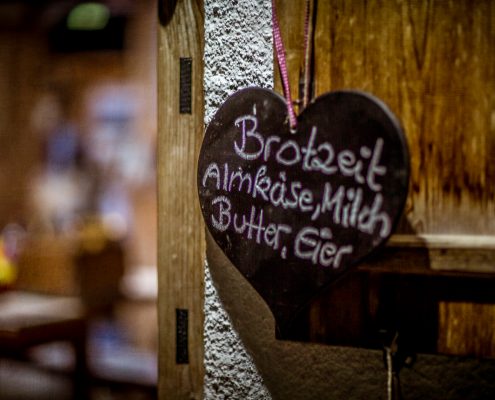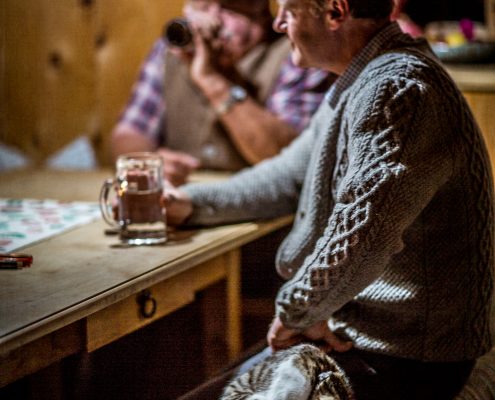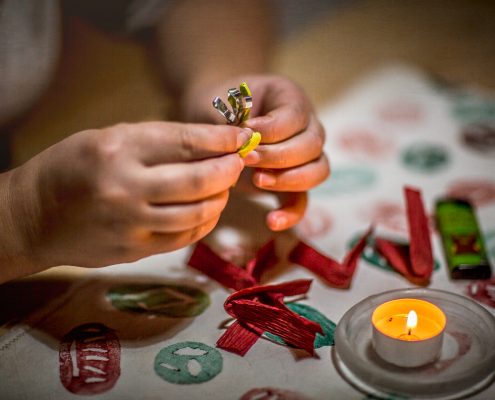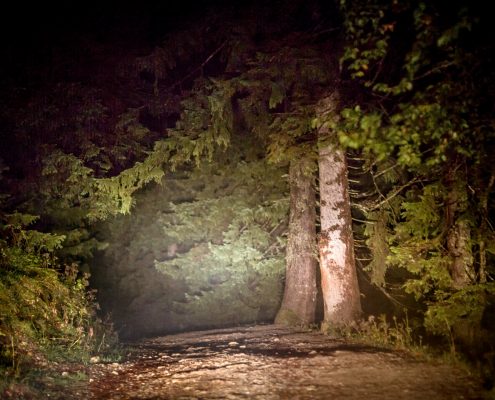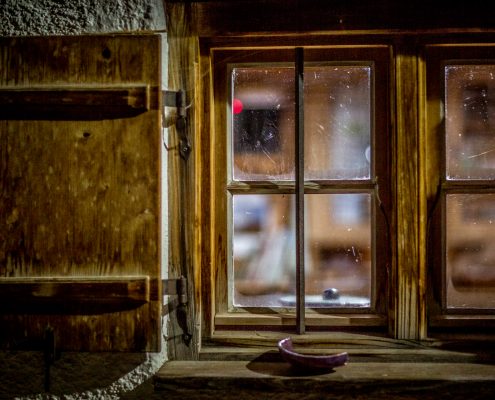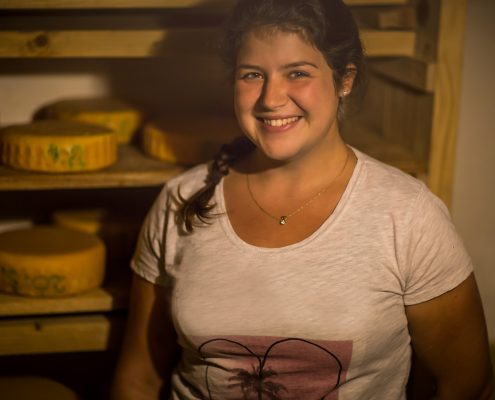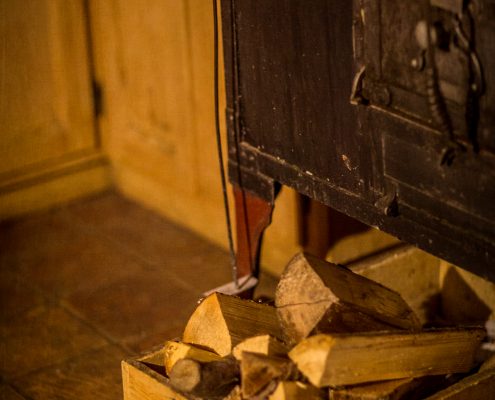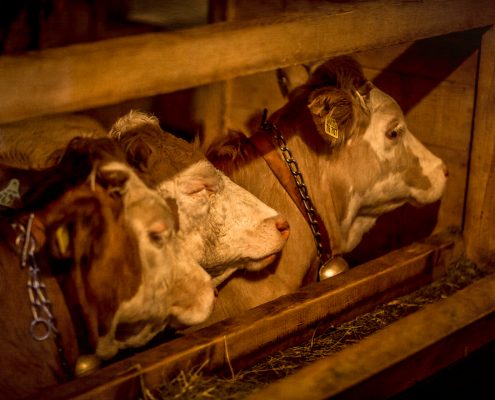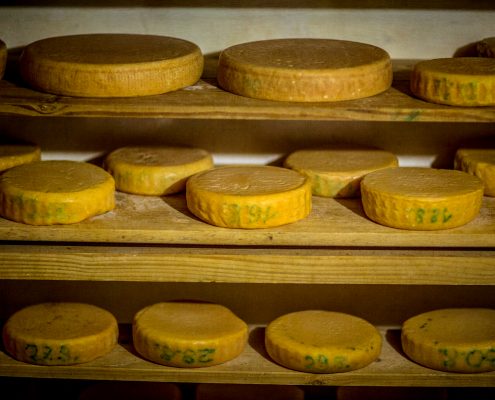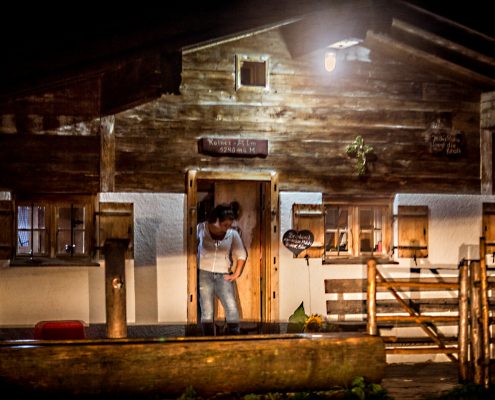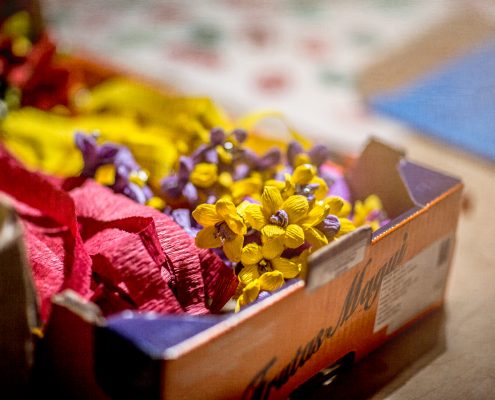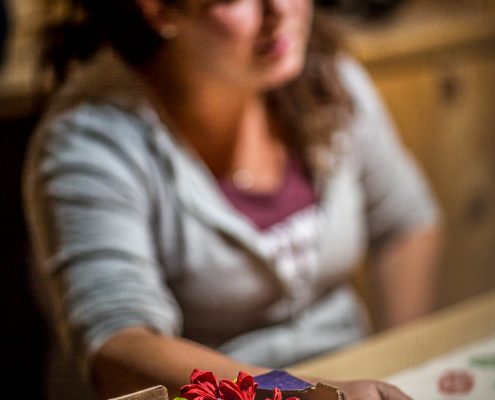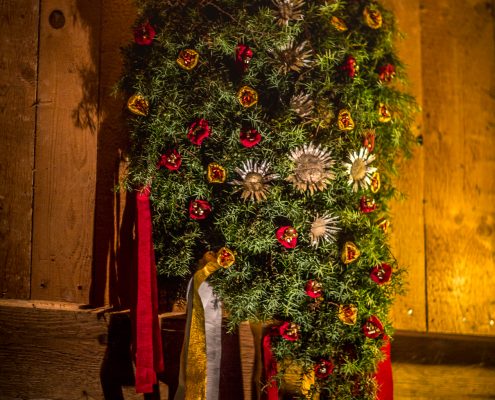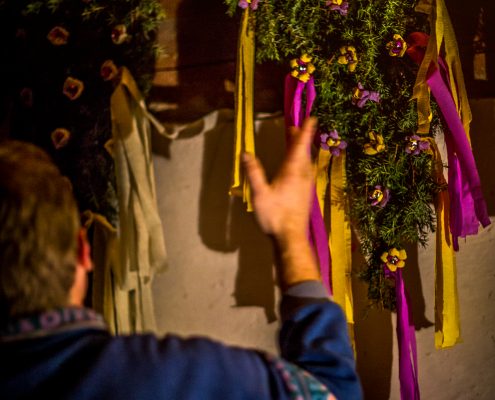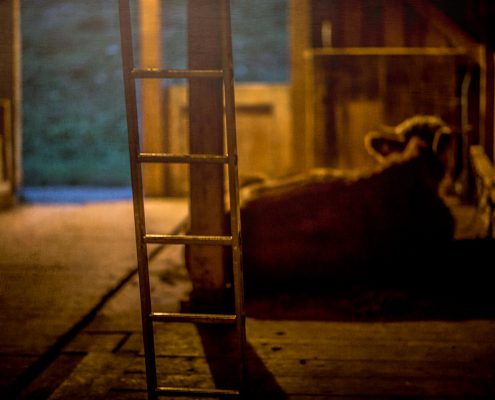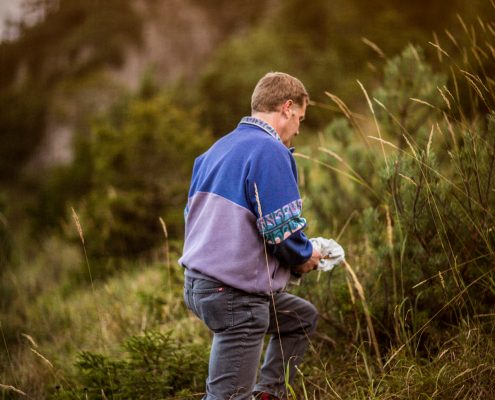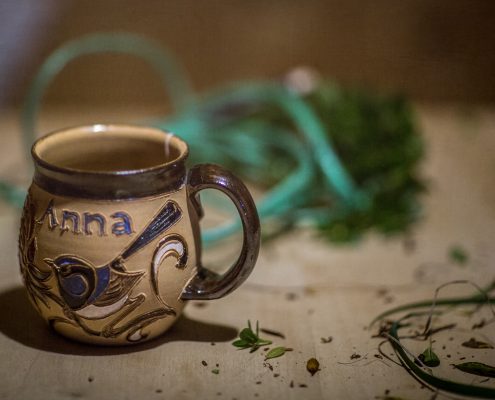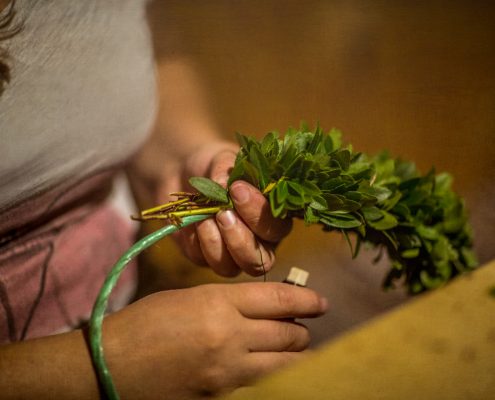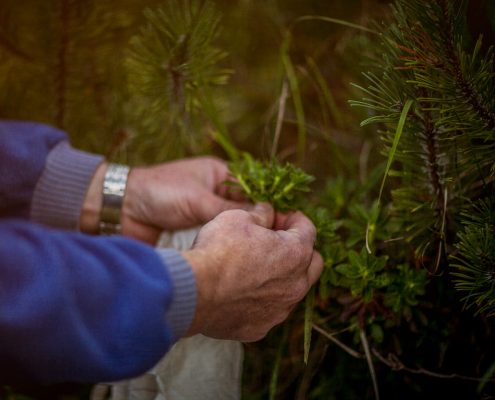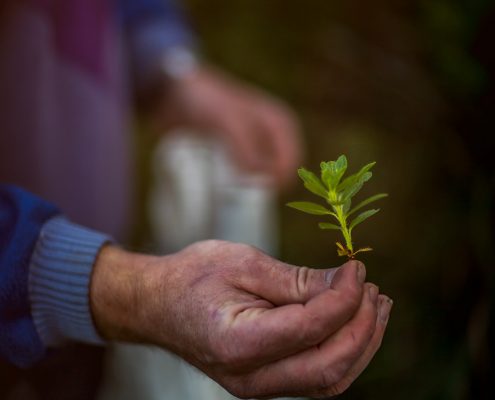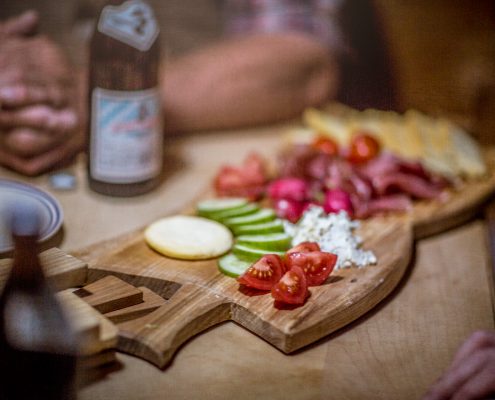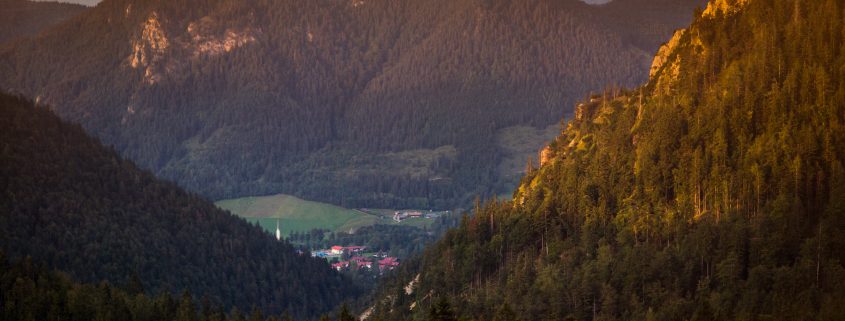“Aufbuschen” Keeping Traditions Alive
For three years now I have had the joy of spontaneously capturing photos of a particular Schliersee family as they passed by my house in Neuhaus during their Almabtrieb. On one occasion I managed to hand the daughter Magda a business card and thus began our dialog.
This year I was determined to learn more about the back story of Almabtrieb. Who does what and what does it all mean? I received a wonderful invitation from the Bucher family of Unterrißhof in Schliersee, to join them several days before their cattle drive to prepare the decorations.
“Aufbuschen” is a regional world for the process of crafting the various colorful decorations for the cows for Almabtrieb. Many headdresses for the cows are made using an armature that is handed down through the family over the years and is formed in the initials of the farmer. An important armature to which the bouquets of wild alpine rhododendron “Almrausch” are affixed is the crown shape which sit atop the head of the lead cow. The symbolism and traditions of Almabtrieb are centuries old. Though the cows will ultimately each autumn be driven down from the high pastures back to the farm, it is not fact if they will or will not be decorated. The cows are only decorated if it has been a safe and successful summer. This means simply no tragic loss of life. It is only then that a farmer will decorate their cattle.
The farm of Bauernhof Unterrißhof, enjoys one of the most spectacular views in Schliersee. That is truly something to say since there isn’t honestly a bad view of Schliersee. It is located just off the beaten path the drive in alone is pretty magical and affords you endless beautiful views around each tree lined bend.
One sunny September afternoon, I arrived heart leaping for joy over the experience and the view. In the Baurenhof garage everyone was gathered and everything was perfectly organized. The floor was covered with tray after tray of bright colored hand made paper streamer and flowers. This collection obviously represented many long hours of handwork. Leaning against the garage wall were the leather headdresses with the prickly pine branches just waiting to be shaped and decorated. I asked Markus Bucher, Uncle of Magda, can you still buy the headdresses anymore and he told me they were Austrian and that saddle makers there still make them in the traditional way.
After a quick introduction and explanation we tucked right into the work. It was all so beautifully planned and organized that even this American was able just step in and help. I asked if the style of the decorations were always the same and they said no each year the each family tries to add something new and exciting. That year for the Bucher family, there was a flower with an almost rainbow color scheme in the center that they weren’t too sure about right up to when they flowers were attached to the bush. It was a pleasant surprise how nicely the color scheme worked.
As we were finishing up work, the young son of Markus arrived from his after school dance lesson of the traditional Bavarian Schuhplattler. He excitedly and deftly jumped right in to work. I was amazed at how he at such a young age, happily began bringing in the various wagonloads of giant cowbells to be cleaned and polished. He was obviously an expert. I have to admit I have been photographing this young man for the past few years and I was astounded back then at his confidence and ability to drive a 2000 pound cow through busy streets and I was no less impressed with him now.
Working side by side, preparing for this families yearly event to give thanks for a successful year was truly wonderful. I kept hearing in my head “Many hands make light work” and it was true. No only did the time fly by but I learned so much from each generation about their passion for keeping these important traditions alive.
You too can enjoy the view and stay with the Bucher family at Unterrisshof. To find out more about their availabilities:
http://www.unterriss-hof.de
http://www.unterriss-hof.de/almhuette-am-spitzingsee/index.html
American artist, photographer and professional wanderer who, after 20 years of roaming, put down roots in a 100 year old Bavarian farmhouse and fell in love with the Alpine village and its residents (both 2-legged and 4-legged).
